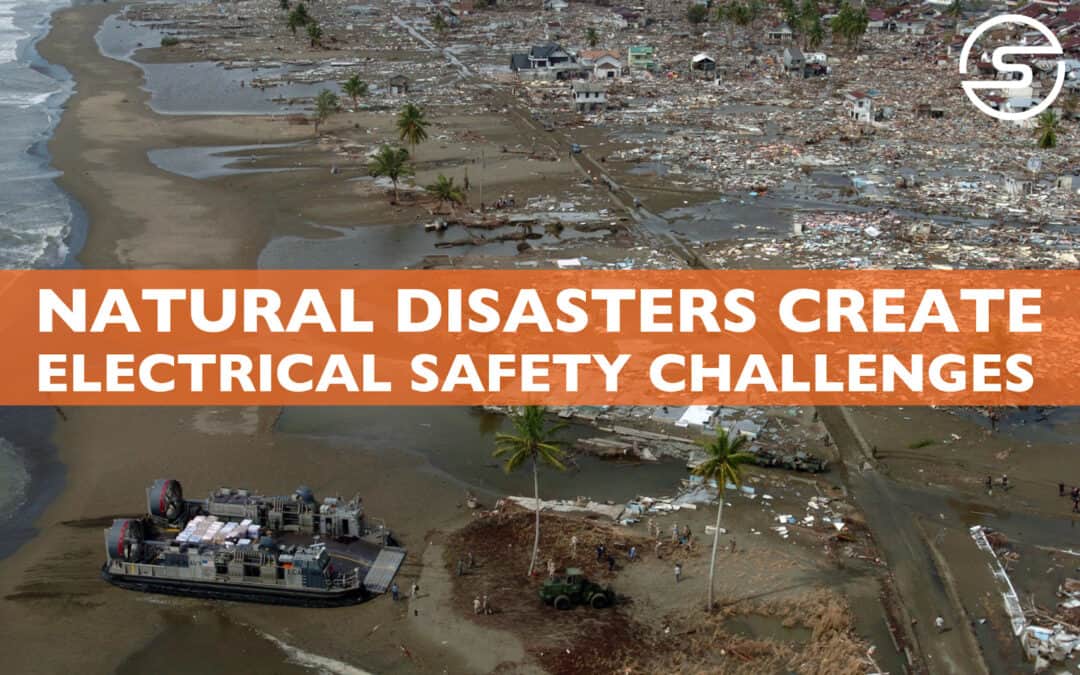Natural Disasters Create Electrical Safety Challenges
Extreme weather events such as tsunamis, hurricanes, floods, storms, fires, and earthquakes commonly result in power outages. The workers responding to these natural disasters are at a heightened risk of work-related injuries. Many injuries, such as electrocution, electric shock, and third-degree burns, derive from contact with fallen power lines, utility poles, and other faulty or damaged equipment. For these workers, personal voltage and current detectors, or PVCDs, offer a way to avoid dangers in inclement weather and dangerous conditions without added risk.
When most people think about the dangers of extreme weather, apparent hazards such as collapsing structures, lightning, or being caught in a fire are the first that come to mind. These fears are valid, but another risk often forgotten about is the danger of electrocution. Electrical threats come with no advanced warning because they can’t be seen, felt, or heard.
An analysis of national power outage data by Climate Central found that there has been a 67% increase in large-scale power outages caused by extreme weather events since 2000. And this trend will continue as the grid is expanded to cover more real estate. Not only do these power outages cost citizens and companies billions of dollars yearly, but they also create a public safety risk.
Wildfires
More than ever, firefighters have to deal with fires in wildlands. As people choose to live in more remote areas, a double risk is created from both fires and damaged infrastructure. When people move out to remote forested areas, power lines and substations must be extended to these regions and maintained. When this equipment is damaged, the risk of fire increases.
Firefighters are at risk of being exposed to live wires whenever there is a fire in an area with power lines. Fires can burn wire insulation, power poles, and other equipment. Even more, smoke and gasses emitted from the burning matter can themselves constitute a conductive path for electricity, causing arc flashes and energized fields. Water from a fire hose can create an electrical danger if the water comes into contact with live lines. When a firefighter is trying to contain a fire, watching for electrical hazards can be the last thing on their mind.
Tsunamis, Storm Surges, and Floods
Anytime there is flooding, electrical dangers are a concern: water and electricity do not mix. An entire area can be lethal if water enters a facility with energized equipment or a downed electrical power line falls on wet pavement, a ditch, or a gutter. It isn’t uncommon for citizens and storm response crews to suffer electrical injuries and fatalities while tending to flooded areas. What is more, electrical dangers do not end after the flood has receded.
Hurricanes and Storms
Hurricanes and storms often leave communities covered in debris from trees, shingles, and other industrial materials. Power lines can be knocked down, tangled, and buried deep underneath the rubble. In this situation, it is hard to identify power lines or other energized equipment that may be part of that mess. If people are missing, these crews often come in while a storm is still ongoing.
By the time emergency response, clean-up, and repair crews enter an affected area, it can be nearly impossible for them to identify all the electrical threats that are lurking.
Personal Voltage and Current Detectors Identify Live Lines
Among the many tools one can use to navigate these natural disasters, one of the most life-saving tools is a personal voltage and current detector (PVCD). These devices will alert users of hidden energized fields and reveal their approximate location. First responders and utility crews can know when to steer clear of a given area until professionals have successfully de-energized the site.
COMPASS PVCDs, designed by Safeguard Equipment, are state-of-the-art. When clipped onto a hard hat or attached to a hand-held mount, users have 360o detection. The COMPASS G2 and COMPASS Pro can detect both high and low-voltage electrical areas and indicate the direction of the source of those fields. It can also see the current, which many competitor devices cannot do. It operates off a rechargeable lithium-polymer battery that provides up to 80 hours of service in all weather conditions.
The brave individuals who put their lives on the line to rescue survivors, offer assistance, and rebuild their communities deserve to be protected. COMPASS® PVCDs decrease the risk that responders will suffer injury or death from electric shock by giving them a “sixth sense” that detects electrical threats.
Contact Safeguard Equipment today for a demonstration, and discover how our COMPASS® products can protect first responders and other at-risk workers.
Views: 35

